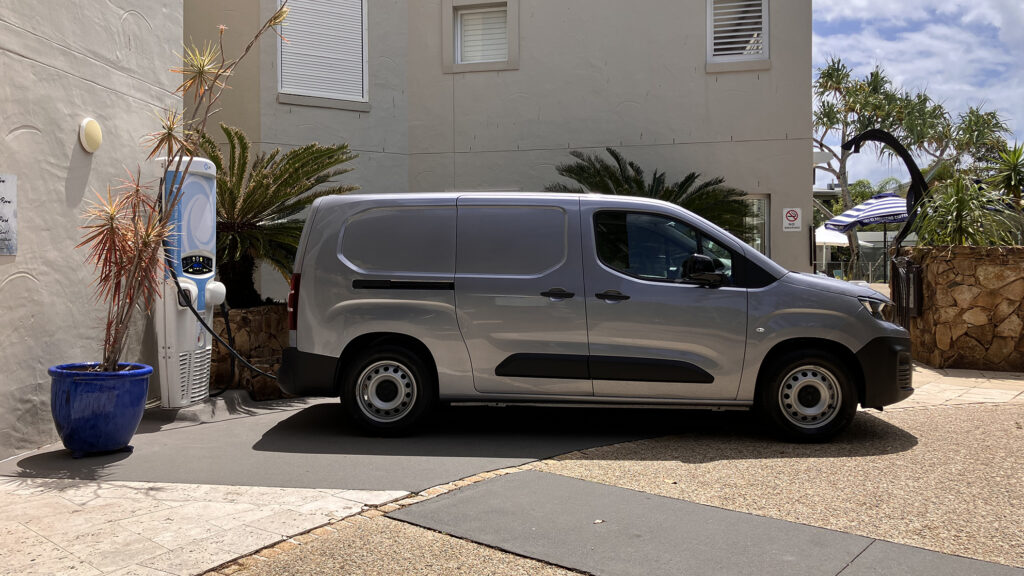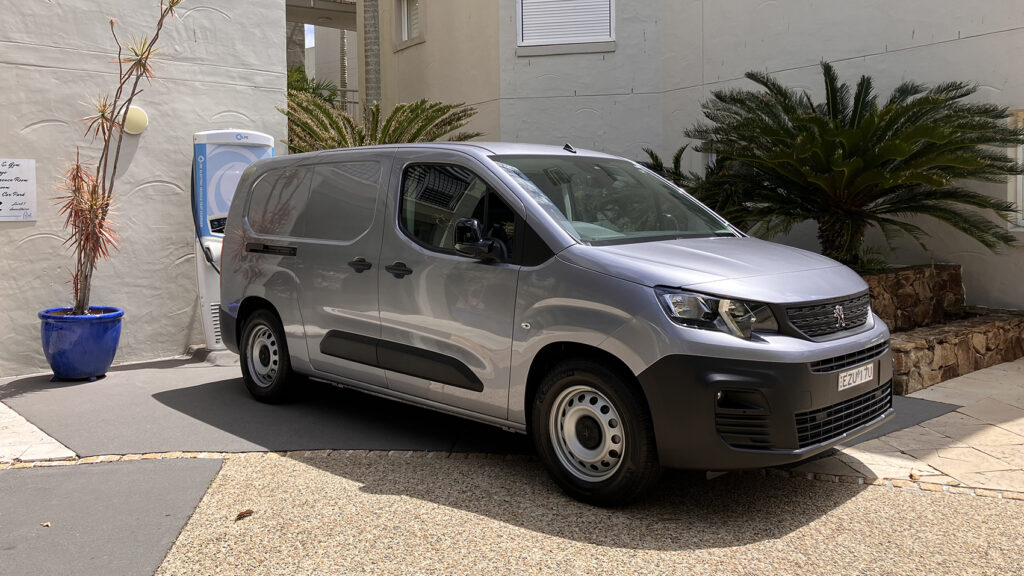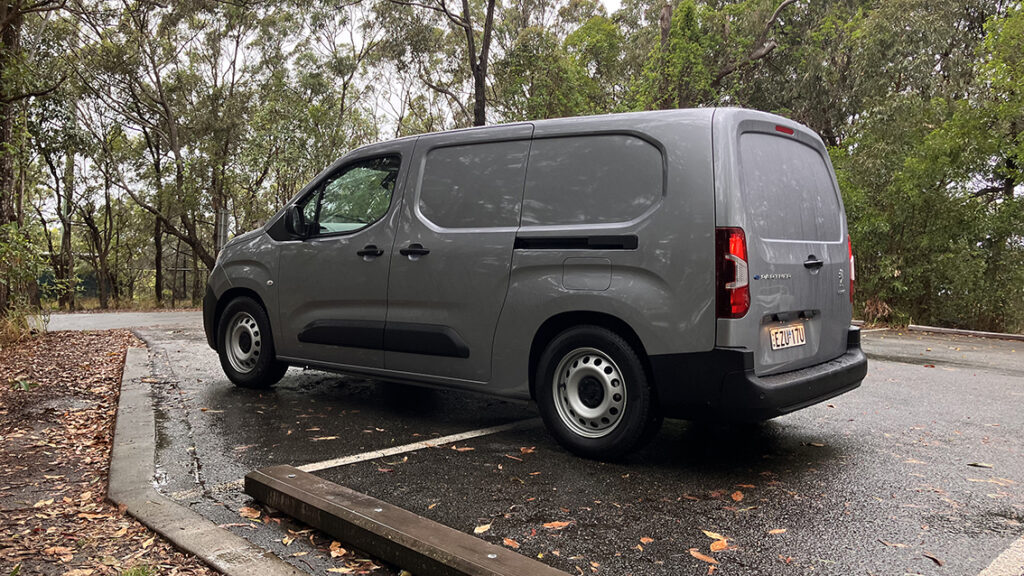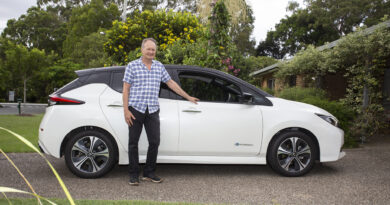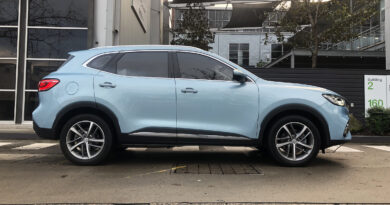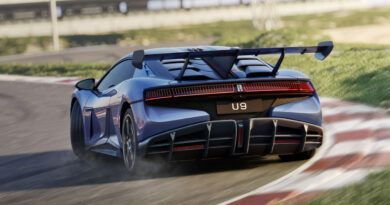Peugeot e-Partner electric van loaded vs empty: Range test
Peugeot’s fully electric e-Partner van has an official range of 258km.
That is, of course, unless you sling some weight in the back. And this being a work van, that’s exactly what owners will do.
Additional mass is an EV’s enemy. Throw in the poor aerodynamics of a brick-like van and it’s little wonder this Peugeot’s range is far from crash hot.
Which has us asking the question. Just how detrimental to EV range is it when the e-Partner’s used as intended? As in actually carrying stuff?
We don our finest tradie attire and put it to the test.

Empty vs 377kg on board
The long wheelbase e-Partner (the only version available in Australia) has a maximum payload of 753kg.
Some of you drawn to emissions-free vanning may never lug anything like that – I’m no expert but I can’t imagine a florist’s load ever gets too heavy. In contrast, removalists or tradies with heavy tools and equipment may flirt with that payload maximum.
For the purpose of our test, let’s meet half way. Splitting 753kg in half gives 377kg, so that’s what we’ll load in the back.
To be honest, I’d have liked to do the test with the full 753kg, but after lifting in 377kg (each item was first individually pre-weighed) of book boxes, heavy household items and spare tyres, my back said half was enough. Especially as I’d be lifting it out again afterwards.
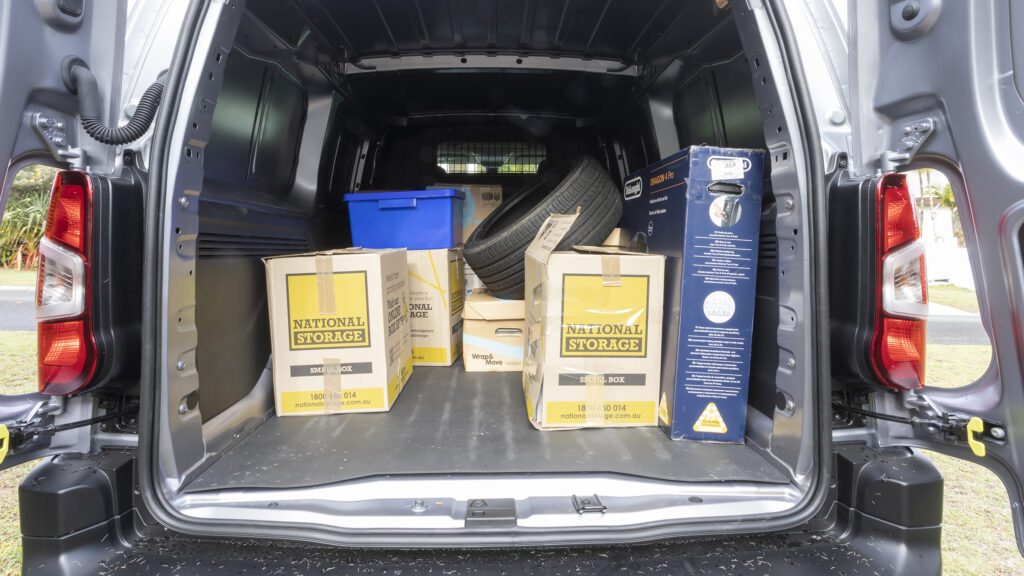
For fairness, I’d drive the same 30km road course: a mix of town stop-start, hills, a bit of 80km/h dual carriageway and through residential areas. Typical van life, you’d think.
I’d drive the e-Partner with 377kg loaded first, then again with it empty. The two 30km route experiments were conducted immediately after the other, so outside temperature (averaging 22C) and traffic were basically the same.
I put headlights on full, had the sound system going the whole time and set cabin air conditioning to 21C.
Dressed for duties
I thought it best to put on the uniform. Work boots, tradie blue singlet and fake roll-up in the mouth.
I grabbed my Yeti bottle of warm milky tea, slung a Bic behind my ear, then rocked up two hours later than I’d promised. Keeping things authentic.
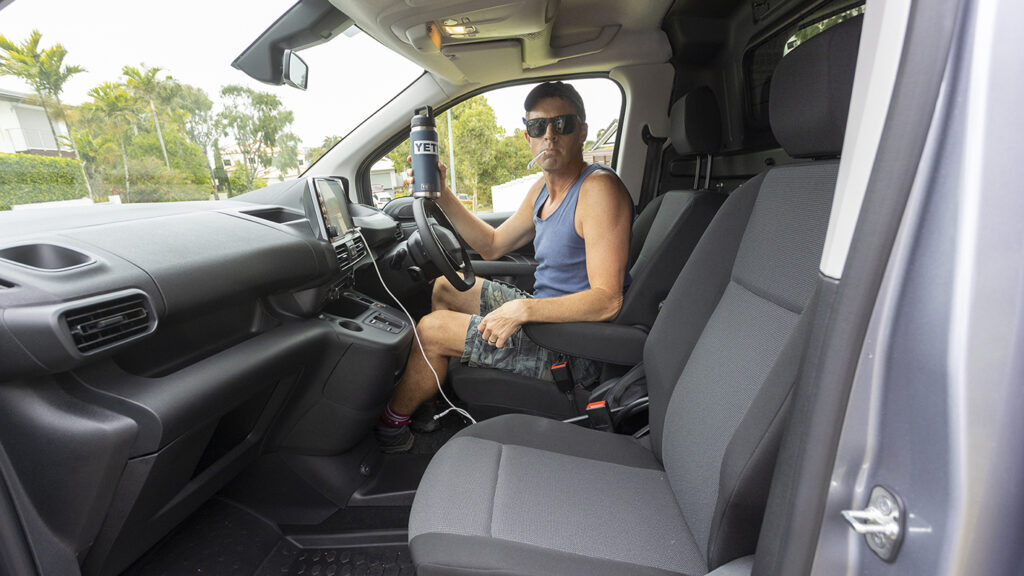
On my test, it was clear energy use was most severely affected by driving up hills. A steep one kilometre section saw my kWh/100km rise sharply, both with and without payload onboard.
The Peugeot e-Partner’s official economy figure is 21.8kWh/100km on the WLTP cycle.
Proving perhaps I’m cut out for a life of efficient delivery van driving, with the 377kg payload I returned 20.1kWh/100km energy use. That was after 30km and at an average speed of 47km/h.
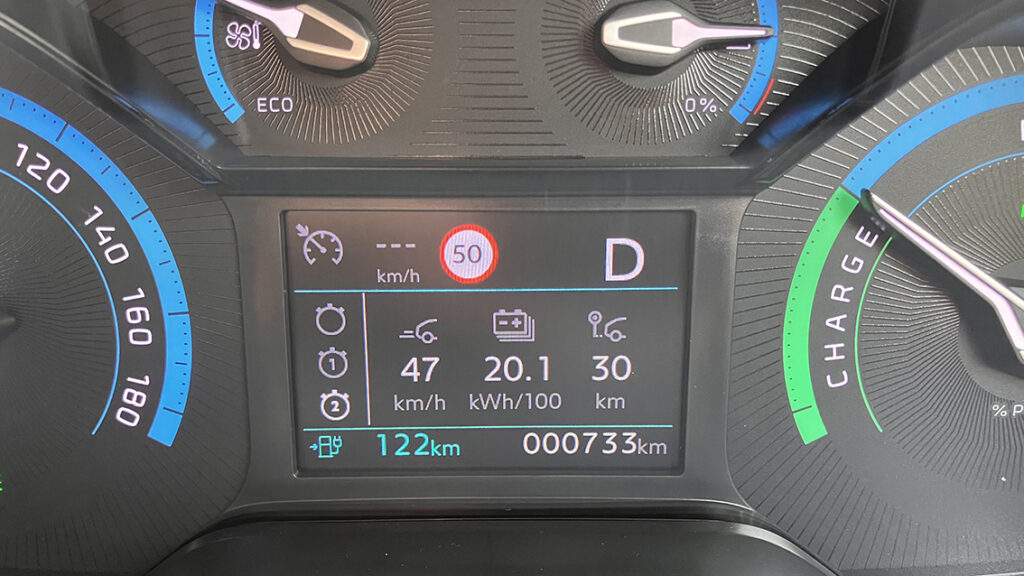
After unloading, I repeated the test with the van empty and the result was 17.7kWh/100km after my 30km loop.
This far bettered the e-Partner’s WLTP figure. Seriously, are these testers lead foots or what?

Conclusion
While this was just a simple test, it does highlight the range sacrifice potential buyers of electric vans likes the Peugeot e-Partner will suffer.
If you bank on having the van’s 258km electric range, remember that number’s going to drop by potentially a decent percentage depending on how much load you lug.
As a percentage, with 377kg on board, our energy use was 14 per cent higher than with no load.
If we use the WLTP figure, losing 14 per cent from the 258km range drops it to 222km. You can well imagine with the e-Partner’s full payload of 753km, that range would plunge below 200km.
Positively, we were more efficient than WLTP testers, and from full charge, the range indicated on the e-Partner’s dashboard was around 280km when full.
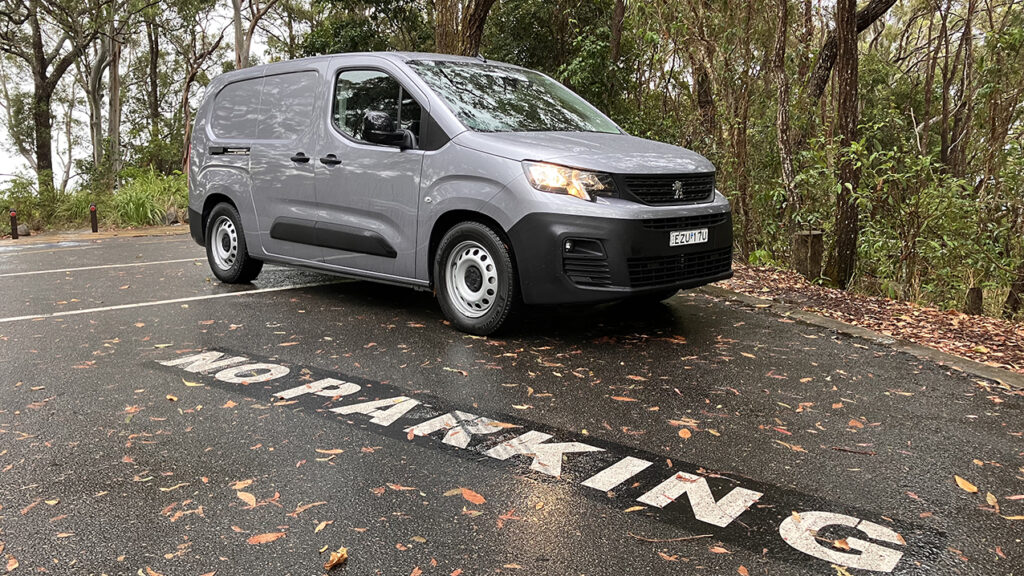
You can read our full review of the Peugeot e-Partner here, but my brief life as a delivery driver had me appreciating how very appealing EV van life is. If you typically don’t cover great distances each day, that is.
A Peugeot delivery van’s diesel rattle was a familiar sound of my city childhood, and it’s a joy to be mooching around in this silent e-Partner version. Even so, how about a manufactured sound generator of a 1993 Peugeot Boxer van, just for nostalgia?
The drive’s reasonably car-like in town due to its size, and I was surprised how relatively well it handled in turns, and gripped on its Michelin tyres in the wet. Brake feel is very ordinary, however.
Turning circle’s decent, and even though there are no rear windows, the reversing camera’s a good one to help with tight manoeuvres.
Performance is sluggish to say the least from the 100kW/260Nm electric motor, but for town life it’s ample.
While public DC charging proved fine – 101kW charge speed is acceptable and it’ll go from 0-80% in 30 minutes – I’m disappointed the e-Partner doesn’t include a Mode 2 charge cable so it can be plugged in to a domestic socket.
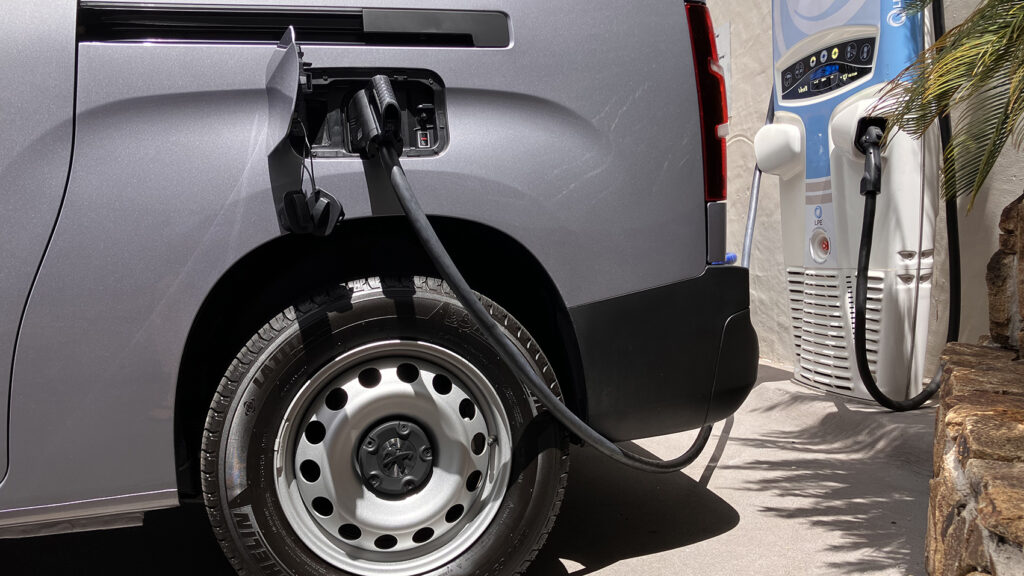
With its chunky drive away price of over $63,000, asking an additional $1325 for this cable is stingy.
It has an AC cable for plugging into a public AC charger or a home wallbox, but you’d imagine there will be instances in a van driver’s life where the convenience of topping up from a domestic power point would be needed. Public chargers aren’t always within reach, and many are out of service just when you need them most.
I’d want to start each work day with full charge, so being able to plug in at home overnight would be a non-negotiable.
With not great range, especially if you’re carrying a bit of weight each day, as our test proved, keeping the 50kWh battery fully charged is imperative.

Peugeot e-Partner
Price: $59,990 plus on-road costs
Basics: EV, 2 seats, 6 doors, compact delivery van, FWD
Range: 258km (WLTP)
Battery capacity: 50kWh
Battery warranty: 8 years/160,000km
Energy consumption: 21.8kWh/100km (WLTP)
Motors: One on front axle, maximum output 100kW/260Nm
AC charging: 7.4kW, Type 2 plug
DC charging: 101kW, CCS Combo plug
0-100km/h: 11.2 seconds (claimed)



